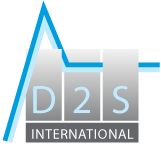Railway Transport – Noise & Vibration Assessment
Noise and vibration solutions from the tender phase over the design to the validation during operation.
D2S International has the capabilities to offer its clients an integrated support towards noise and vibrations.
- Assistance in preparing tender documents (with respect to noise and vibration)
- Analysis of local legislation and normative reference
- Realisation of noise and vibration measurements to characterise the initial situation (before construction)
- Site surveys and categorisation of buildings and soils along the alignment
- Numerical simulations and predictions for air borne noise, ground borne noise and vibrations in different scenarios
- Designs and optimisation of mitigation measures (track and vehicle design) or assists in material selection
- Laboratory tests of the track systems
- Optimisation of acoustic comfort inside stations and vehicles
- Supervision during construction and verifies the performance on site during operation
- During full operation, continuous (24/7) or regular noise and vibration monitoring or optimisation
D2S International has the confidence to guarantee its designs and results.
We make sure our clients comply with all their contractual obligations within the noise and vibration domain.
Procedures to be used today in large international rail transport projects to develop generalized predictions of ground-borne vibration and noise are in most cases imposed in the technical project specifications. Most procedures include three different levels of detail for projecting ground-borne vibration.
Screening
A standard table of impact distances is used to determine if ground-borne vibration and noise from the project may affect residents. More detailed analysis is required if residents are living within the screening distances. The screening procedure does not require any specific knowledge about the vibration characteristics of the system or the geology of the area.
General Assessment
The general level of assessment is an extension of the screening procedure. It is considerably more complex to develop detailed projections of ground-borne vibration than it is to develop detailed projections of airborne noise.
- For at grade sections, the procedure includes the use of line source force densities (to be measured with the considered vehicle type on the considered standard track or to be taken from an existing data base) and line source transfer mobilities measured on site at different selected reference sections to define how the local geology affects vibration propagation. These allow the calculation of the vibration levels in front of a building.
- For tunnel sections, the procedure includes the calculations of the wheel/rail impact forces using the equivalent wheelflat theory (input data are track system, non suspended vehicle mass, vehicle speed, wheel and rail characteristics) and the calculation of the vibration levels and spectra in points on the tunnel wall using a finite element model. Using these tunnel wall vibrations and measured soil transfer mobilities, the vibration levels are computed in front of the buildings.
- As well for as grade as tunnel sections, the vibration levels and ground-borne noise levels at specific buildings are estimated by applying adjustments to account for factors such as different track support system, vehicle speed, type of building and rooms considered, coupling between building and soil. Normally maintained track and wheel conditions are considered. Vibration levels are calculated in all the reference sections and used to develop vibration levels as a function of distance from the track along the complete alignment.
The computed vibration levels (overall values and/or spectra) are function of the criteria to be considered (function of project). In this general assessment the effect of mitigation measures is also computed. The accuracy of prediction can be as good as 3 dB for at grade sections with well identified line source force densities.
This general assessment procedure allows the prediction of vibrations and ground-borne noise levels and definition of mitigation measures in a short time (about 8 weeks) for a large project (e.g. new main line project of 100 km, new metro line, extension of a tram line). This time schedule is thus compatible with standard project study and execution schedules.
Detailed Analysis
The purpose of the General Assessment is to provide a fast method of developing estimates the levels and/or spectra of ground-borne vibration and noise that can be compared to the acceptability criteria. For many projects, particularly when comparing alternatives, this level of detail will sufficient for the environmental impact assessment. In sections and for buildings where potential problems have been identified in the General Assessment, a Detailed Analysis can then be undertaken during final design of the selected alternative to accurately define the level of impact and design mitigation measures. The Detailed Analysis involves applying all of the available mathematical and numerical tools for accurately projecting the vibration impact at specific sensitive sites. The reasons for using a detailed analysis can be: increase precision of calculations, optimisation (reduction) of the extend of mitigation measures, optimisation of the type of mitigation measure (e.g. avoid floating slab), obtain a zero error situation when a very sensitive building is involved (e.g. wafer fab lab, concert hall, …).
A Detailed Vibration Analysis consists in general of three parts:
- Survey Existing Vibration. Although knowledge of the existing levels of ground-borne vibration is not usually required for the assessment of vibration impact, there are times when a survey of the existing vibration is valuable. Examples include documenting existing background vibration at sensitive buildings, measuring the vibration levels created by sources such as existing rail lines, and, in some cases, characterizing the general background vibration in the project corridor.
- Predict Future Vibration and Vibration Impact. All of the available tools should be applied in a Detailed Analysis to develop the best possible estimates of the potential for vibration impact.
- Develop Control Measures. Controlling the impact from ground-borne vibration requires developing cost-effective measures to reduce the vibration levels. The Detailed Analysis helps to select practical vibration control measures that will be effective at the dominant vibration frequencies and compatible with the given transit structure and track support system.
